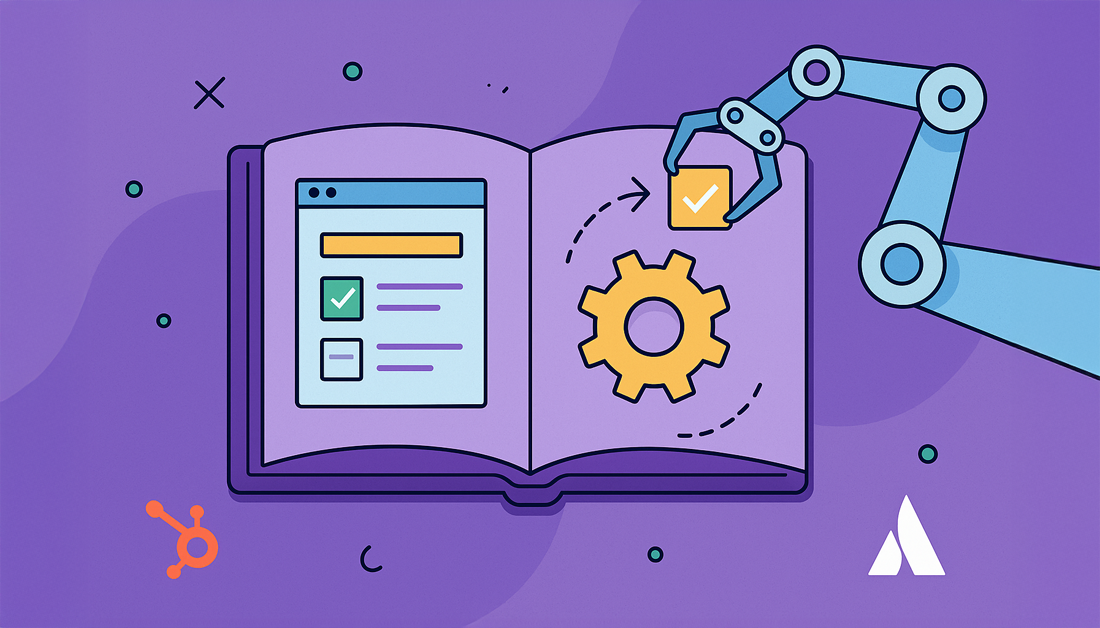Understanding The 80% Data Entry Automation Revolution
The amount of data businesses handle daily is immense. Customer information, invoices, inventory records, and financial transactions all contribute to this influx. Traditionally, managing this meant hours of manual data entry, a process susceptible to errors and slowdowns. Data entry automation offers a powerful alternative, changing how we handle information. This section explores what data entry automation is and how it’s reshaping modern workplaces.

The infographic above illustrates data entry automation’s impact, showcasing adoption rates, average weekly time saved, and error reduction. Early adopters are seeing substantial gains in efficiency and accuracy, demonstrating the technology’s potential.
Why Automate Data Entry?
Data entry automation’s benefits go beyond saving time. While reduced manual work is a key advantage, accuracy improvements are just as important. Automated systems significantly reduce human error, resulting in reliable data and improved decision-making. Automation also helps businesses scale operations. As your business expands, automated systems handle increasing data volumes without needing more staff.
This efficiency translates to considerable cost savings. If your team spends hours on manual data entry, automation frees that time for strategic work, boosting productivity without extra hires. Data entry automation significantly improves productivity and reduces costs. One statistic reveals automation can cut manual data entry by up to 80%. This saves time and improves accuracy, with automated systems reaching between 99.959% and 99.99% accuracy. More detailed statistics can be found here: Learn more about data entry statistics.
To further understand the benefits of automation, let’s examine a direct comparison of manual versus automated processes. The following table summarizes key performance differences:
Manual vs. Automated Data Entry Performance Comparison: Real-world performance metrics comparing traditional manual processes with automated data entry solutions.
| Performance Metric | Manual Entry | Automated Entry | Improvement Factor |
|---|---|---|---|
| Time Spent (hours/week) | 40 | 8 | 5x |
| Error Rate | 1% | 0.01% | 100x |
| Cost (USD/week) | $1,000 | $200 | 5x |
| Scalability | Limited | High | Significant |
This table demonstrates how automation drastically cuts time spent, minimizes errors, and significantly reduces costs. The enhanced scalability allows businesses to easily manage growth.
Different Approaches to Automation
Data entry automation offers diverse solutions, each fitting different requirements and budgets. Form-filling solutions automate basic data transfer, while AI-powered validation systems handle complex extraction and verification. Choosing the right approach depends on your data’s complexity, team skills, and existing system integration needs.
Matching Automation to Your Business
Understanding your business needs is critical for successful data entry automation. A small business with limited needs might choose a simple solution. A large enterprise with complex data may need a robust, AI-powered system. Assessing your team’s technical abilities is important too. Some solutions require technical expertise, while others are user-friendly. Finally, integrating automation with existing systems like your CRM or ERP is essential for seamless data flow and peak efficiency. Consider these factors to ensure your automation strategy aligns with your goals.
Choosing The Right Data Entry Automation Tools

Selecting the right data entry automation tools can be a daunting task. This section offers a practical guide to help your business make informed decisions, combining technical insights with real-world application. It emphasizes understanding not only the available technology, but also how it aligns with your specific operational needs.
Key Considerations For Tool Selection
Choosing the right data entry automation tool depends on several key factors. First, define your automation goals. Are you focused on reducing errors, increasing speed, or scaling your operations? For example, if accuracy is your priority, look for tools with strong validation features.
Next, consider your data volume and complexity. High volumes of complex data might necessitate AI-powered solutions, while simpler tasks could be handled by basic form automation tools. Your current technical infrastructure is another important factor. Some tools seamlessly integrate with existing systems, while others require significant customization.
Finally, remember to account for your budget and the tool’s long-term scalability. Choosing a tool that can grow with your business is a crucial consideration for long-term success. You might also want to check out this helpful resource: How to master data integration best practices.
Evaluating Data Entry Automation Tool Categories
Data entry automation tools are typically categorized into several key types. Optical Character Recognition (OCR) software extracts data from scanned documents and images, which is especially valuable for digitizing paper-based processes. Optical Character Recognition is a widely used technology for this purpose.
Robotic Process Automation (RPA) platforms automate repetitive tasks by mimicking human actions within software applications. Robotic Process Automation can be incredibly efficient for streamlining workflows across multiple systems. Finally, AI-powered extraction systems use machine learning to extract data from unstructured sources like emails and PDFs. This advanced approach is best suited for complex data extraction requirements.
Analyzing Popular Platforms
To help you evaluate different options, we’ve compiled a comparison of leading data entry automation tools. The following table summarizes key features and considerations:
To understand the landscape of data entry automation tools, let’s look at a comparison of some popular platforms. This table highlights their core strengths, ideal business types, investment levels, and integration capabilities.
Leading Data Entry Automation Tools Analysis
In-depth comparison of top automation platforms including real user feedback, pricing insights, and implementation considerations
| Platform | Core Strengths | Ideal Business Type | Investment Level | Integration Capabilities |
|---|---|---|---|---|
| Hypothetical Platform A | User-friendly interface, basic automation features | Small businesses with simple data entry needs | Low | Limited integrations |
| Hypothetical Platform B | Robust RPA capabilities, advanced workflow automation | Medium-sized businesses with complex workflows | Medium | Integrates with common CRM and ERP systems |
| Hypothetical Platform C | AI-powered data extraction, high accuracy | Large enterprises with high data volumes and complex data structures | High | Extensive integration options |
Keep in mind that this table offers a simplified overview. Real-world tool selection requires more in-depth research into specific platform features and user reviews.
Designing A Successful Pilot Program
Before fully committing to any data entry automation tool, a pilot program is highly recommended. This allows you to test the tool in a controlled environment and identify any potential problems.
Begin by selecting a specific process to automate. Define clear objectives and metrics for success. For example, you might target a 20% reduction in processing time.
Train your team thoroughly on the new tool and processes. Monitor the pilot program’s performance closely and gather user feedback. This valuable data will inform your final decision about full-scale implementation.
By taking these steps, you can minimize risks and increase the likelihood of a successful data entry automation initiative. Remember, the key to effective data entry automation lies not just in the tools themselves, but also in the strategy and execution.
Building Your Data Entry Automation Strategy
Success with data entry automation isn’t about finding the fanciest tools. It’s about building a strategy that fits your specific business needs. This requires a thorough approach, from the initial evaluation to the final implementation, similar to the methods used by companies that have already achieved measurable automation success.
Identifying and Prioritizing Automation Opportunities
The first step is figuring out which processes you should automate. Concentrate on tasks that are repetitive, time-consuming, and susceptible to human error. These are perfect candidates for automation and offer the fastest improvements. For example, moving data between spreadsheets or entering information from paper forms are great places to start. When considering data entry automation tools, look into platforms like AnotherWrapper that offer an AI App Generator.
Prioritization is essential. Don’t attempt to automate everything at once. Begin with smaller, less complicated projects to gain traction and demonstrate the value of automation. This allows your team to adjust to new workflows and gain confidence in the technology before tackling larger, more intricate implementations. Also, starting small allows for changes based on early results.
Change Management and Team Adoption
Automating data entry will undoubtedly change current roles and responsibilities. Managing the human element of this change is crucial for successful implementation. Maintain open communication with your team during the entire process. Explain the advantages of automation, both for the company and for individual team members.
Emphasize how automation can free employees from tedious tasks, enabling them to concentrate on more engaging and strategic work. This transparent communication can ease any anxieties and build a positive perspective on automation. Surprisingly, there’s still a need for data entry services despite increased automation. Job postings for Data Entry Specialists have risen by 7% in the past year, demonstrating a continued need for human oversight and quality assurance. You can find more detailed stats here.
Provide proper training and support. Give your team the skills they need to manage and oversee the automated systems. This empowers them to become valuable contributors in the new, automated environment.
Setting Realistic Timelines and Measuring ROI
Setting realistic deadlines is crucial for project success. Avoid overly ambitious targets that can lead to rushed implementation and unexpected issues. Divide the project into smaller, manageable phases with clearly defined milestones. This allows for improved progress tracking and provides chances to make adjustments along the way.
Data entry automation offers a significant return on investment (ROI). However, accurately measuring this ROI requires a broad perspective. Consider not just the direct cost savings from reduced manual labor, but also the less tangible benefits like improved accuracy and higher employee satisfaction. These aspects contribute to long-term business growth and should be considered when calculating the overall ROI. By taking a thorough approach to building your data entry automation strategy, you can maximize the advantages of this technology and position your organization for lasting success.
Implementation Strategies That Actually Work

Moving from theory to practice is where data entry automation truly shines. This section explores practical implementation strategies, based on real-world examples, to guide you toward a seamless transition. We’ll examine how to effectively deploy these solutions while maintaining your existing business operations.
Phased Rollout and Pilot Programs
A phased rollout is essential for successful data entry automation. Instead of a complete system change, begin by automating a single, manageable process. This allows for testing, identification of potential problems, and refinement before a wider implementation.
For instance, you could start by automating invoice processing before moving on to more complex data sets. This measured approach minimizes risk and allows for iterative improvement.
Pilot programs offer invaluable opportunities to test automation workflows. These smaller-scale tests provide crucial feedback and practical insights, ensuring the chosen solution truly meets your needs.
This measured approach reduces potential disruptions and allows adjustments based on real-world performance.
Data Migration and System Integration
Data migration, the process of transferring existing data into the new automated system, can be a significant challenge. Maintaining data consistency and accuracy during the transition is crucial to avoid future problems.
Thorough data cleansing and validation are essential for a smooth migration. Furthermore, seamless system integration is critical. Your automated data entry tool needs to work smoothly with your current systems, such as your CRM, ERP, and other essential platforms. This connectivity prevents information silos and ensures smooth data flow across your organization. For further reading on data integration best practices, check out this article.
Addressing User Adoption and Change Management
Implementing data entry automation inevitably alters how teams operate. Addressing the human element of this change is vital. Thorough training empowers your team with the skills to manage and supervise the new systems.
Open communication about the advantages of automation – for both the business and individual roles – fosters a positive attitude toward the change. Emphasize how automation liberates employees from repetitive tasks, enabling them to focus on more strategic work.
Quality Control and Error Handling
Even automated systems require oversight. Implementing validation checks within the automated workflow catches errors before they become larger problems. This could involve automated checks for data formatting, completeness, and consistency.
Establishing clear error handling procedures is equally important. Define how the system identifies errors, who is responsible for addressing them, and what steps are taken to prevent them from happening again. This proactive approach safeguards data integrity and minimizes the effect of any errors.
Scaling and Continuous Improvement
After the initial implementation, focus on expanding your data entry automation to other departments and processes. This might involve adapting current workflows or introducing new automation tools.
Continuous improvement is key for maximizing the long-term benefits. Regularly analyze performance metrics, collect user feedback, and identify areas for optimization. This iterative process ensures your data entry automation strategy remains effective and adapts to your business’s changing needs.
The Human Side Of Data Entry Automation
Data entry automation prioritizes efficiency and speed. However, it also significantly impacts the roles of data entry professionals. Instead of eliminating jobs, automation transforms them. Forward-thinking organizations are embracing this change, helping their teams adapt and flourish.
This allows employees to develop new skills and concentrate on more strategic tasks.
Evolving Roles and Skill Requirements
Automating data entry doesn’t eliminate human involvement. It changes the nature of that involvement. Manual tasks are reduced, leading to roles focused on data stewardship, quality assurance, and system oversight. These new roles require different skills.
The emphasis shifts from manual dexterity to analytical thinking and problem-solving.
For example, a data steward doesn’t manually input data. Instead, they ensure the automated system receives accurate and complete information by managing and curating data sources. Quality assurance specialists verify the output of automated systems, identifying and correcting errors. This highlights the shift from manual input to data management and analysis.
Emerging Career Paths
Automation creates exciting new career paths. System oversight specialists, for instance, become essential for maintaining and optimizing automated workflows. They analyze system performance, identify areas for improvement, and ensure the technology consistently aligns with business needs.
The increasing demand for professionals skilled in implementing and managing data entry automation tools, like HubSpot, also creates new opportunities. This growth offers career advancement and specialization within the field. For a practical example of automation improving workflow, see our guide on integrating HubSpot with Jira.
Empowering Employees Through Upskilling and Reskilling
Organizations successfully implementing data entry automation recognize the importance of investing in their employees. Upskilling and reskilling opportunities are vital for a smooth transition. This might include training on new software platforms, data analysis techniques, or quality control methodologies.
By providing these skills, businesses ensure a seamless transition and empower employees to take on more complex and rewarding roles. This builds a culture of continuous learning and development.
Real-World Success Stories
Many businesses are already benefiting from this human-centered approach to data entry automation. One example is a financial services company that retrained its data entry team to become data quality analysts. These employees now monitor the accuracy of automated transactions, identifying anomalies and contributing to risk management.
Another example is a retail company that upskilled its data entry staff to manage and optimize its automated inventory system. These employees play a key role in supply chain efficiency, forecasting, and strategic decision-making. These stories demonstrate the mutual benefits of automation for businesses and their employees.
The Future of Work in Data Entry
Data entry automation represents the future of work in the field. By embracing automation and prioritizing the human element, organizations can build a more efficient, productive, and engaged workforce. This shift enables businesses to manage growing data volumes, improve data quality, and empower employees to contribute at a higher level.
The focus isn’t just on efficiency, but also on empowering individuals and creating a more fulfilling work experience. This approach is key to long-term success.
Measuring Real ROI From Data Entry Automation

Turning your investment in data entry automation into a measurable success requires a strategic, data-driven approach. It’s about focusing on the right key performance indicators (KPIs) and understanding the broader impact on your business. This goes beyond simply calculating time saved. We’ll explore how to measure the real ROI of automating your data entry processes.
Establishing Meaningful Baseline Measurements
Before automating anything, establish a clear performance baseline. Measure the current metrics of the processes you’re targeting. This might include tracking the time spent on manual data entry, the frequency of errors, and the associated costs. This baseline serves as a benchmark to measure the impact of your automation initiatives. It’s also essential for demonstrating the value of the investment to stakeholders.
Tracking Progress That Matters
Once your automation is running, track KPIs that align with your specific business objectives. Time savings are important, but don’t stop there. Measure improvements in data accuracy, reductions in error rates, and increases in processing speed. These directly influence business efficiency and customer satisfaction. Data entry automation can also impact roles and responsibilities, making it beneficial to review recruiting practices. For instance, consider how you might attract talent in 2025. Don’t forget to assess the impact on employee satisfaction. Automating tedious tasks can boost morale and free up employees for more engaging work.
Calculating True ROI: Beyond the Obvious
Calculating the true ROI involves considering both direct and indirect costs and benefits. Direct cost savings typically include reduced labor costs from less manual effort. However, also consider the costs of implementing and maintaining the automation system. This includes software licensing, training, and ongoing support. Indirect benefits, while sometimes harder to quantify, are equally important. Improved accuracy leads to better decision-making, and increased efficiency results in faster turnaround times and enhanced customer service. To learn more about the tools available, explore our article on reporting automation tools. These indirect benefits contribute significantly to the long-term value of your automation investment.
Communicating Value to Decision-Makers
Presenting the ROI of data entry automation to decision-makers requires clear communication. Focus on the metrics that align with their priorities. This might include cost savings, revenue growth, and improved customer satisfaction. Use visuals like charts and graphs to illustrate the impact. Highlight the long-term benefits, emphasizing how automation sets the business up for future growth and adaptability. This comprehensive approach demonstrates the true value that goes beyond just saving time.
Future-Proofing Your Data Entry Operations
Staying ahead in the constantly changing world of data entry automation requires understanding new trends and adapting your strategies. This section explores how advancements like Artificial Intelligence (AI), Machine Learning (ML), and advanced analytics are changing automation, and what these changes mean for your long-term planning. We’ll also look at how to build adaptable systems that remain effective as technology advances.
The Impact of AI, Machine Learning, and Analytics
AI and ML are changing data entry automation from basic rule-based systems to intelligent, self-learning solutions. These technologies can handle complex, unstructured data, automatically improve accuracy over time, and even predict future data entry needs. This allows businesses to process information faster, make better decisions based on more accurate data, and use resources more effectively.
Advanced analytics are essential for getting the most out of automation. By analyzing data entry patterns, error rates, and other key metrics, businesses can identify problems, optimize workflows, and continually improve their automation strategies. This data-driven approach helps ensure your automation investments remain useful and productive for the long term.
Building Adaptable and Scalable Systems
Building adaptable systems is critical in the ever-changing landscape of data entry automation. As technology advances, your systems should be able to incorporate new tools and techniques smoothly. This means selecting platforms with open APIs and adaptable designs that can handle future upgrades. It also means having a team ready to learn and use these new technologies through continued training and development.
Scalability is another important consideration. As your business grows, your data entry automation solution needs to handle increasing data volumes and complex processes. This might involve using cloud-based solutions that can adjust resources as needed, or choosing platforms that integrate with other business systems as your needs change.
Preparing Your Team for the Future of Data Entry
Data entry automation significantly alters job roles and needed skills. Preparing your team for these changes is crucial for a successful implementation and smooth transition. This includes providing opportunities for upskilling and reskilling, focusing on areas like data analysis, quality control, and system management. Training in data analysis techniques, for example, could help employees understand the results of automated systems and contribute to better business decisions.
Strategies for Continuous Improvement
Continuous improvement should be at the heart of your data entry automation strategy. Regularly evaluate your systems, analyze performance data, and get feedback from users to find areas for improvement. This process helps ensure you’re always optimizing your automation efforts and getting the best results. You could set up feedback systems to hear from your team about how to refine automated workflows or improve the tools they use.
Also, set up a way to assess new technologies and bring them into your existing systems. This proactive approach will help you stay on top of advancements and take advantage of the latest improvements in data entry automation to stay competitive.
Resolution Reichert Network Solutions GmbH offers tools to make data entry automation seamless. Our HubSpot for Jira app connects HubSpot CRM with Jira Cloud, delivering unified data and real-time updates within issue tickets. This removes the need for manual data transfer, which reduces errors and increases efficiency. Learn more about how we can help you future-proof your data entry operations today!
